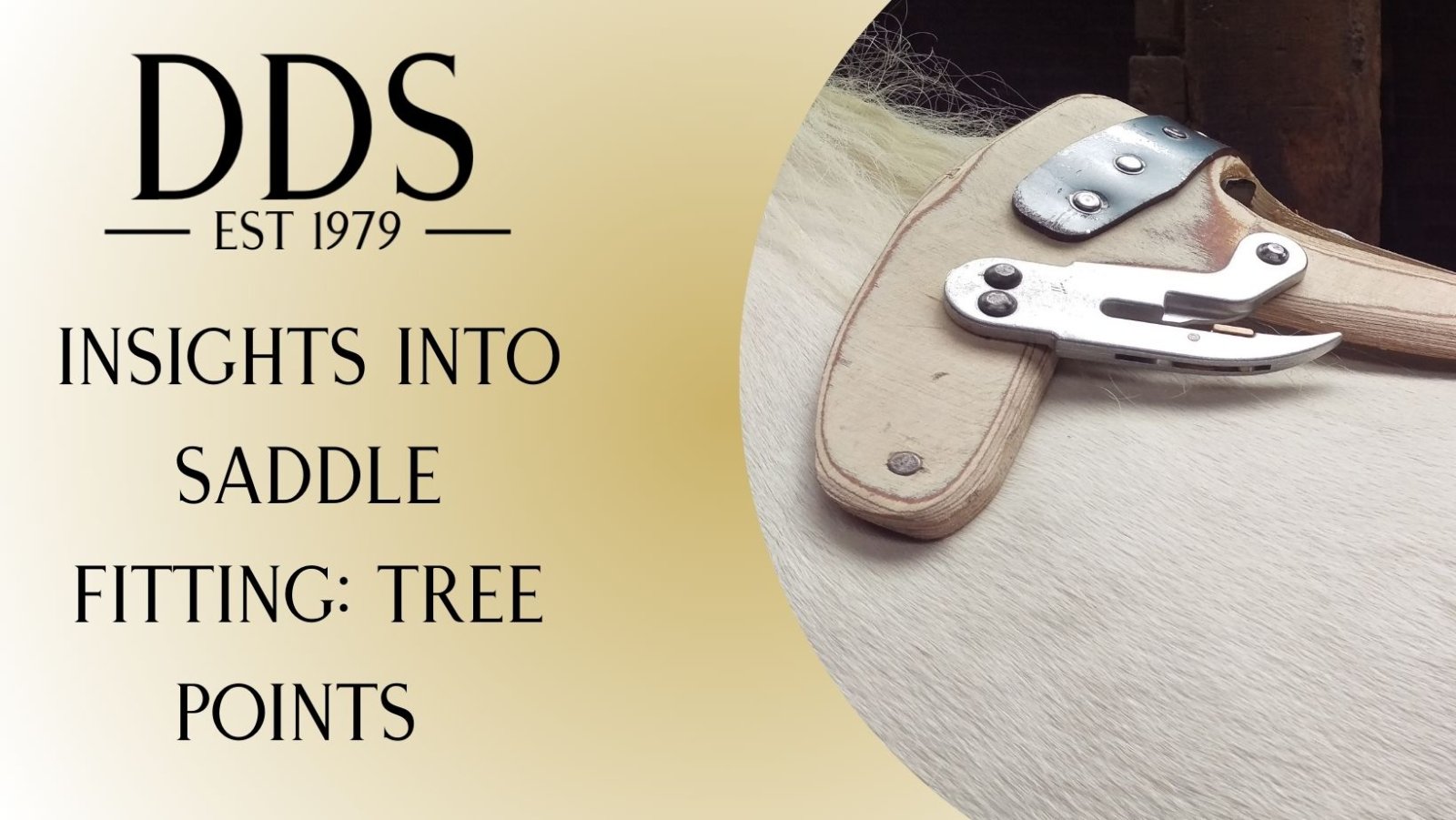
Photo credit: Ideal Saddles
In saddle fitting, tree points play a critical role in how a saddle rests on a horse’s back and shoulders. Tree points are the extensions of the saddle’s internal frame, or tree, which reach down on each side of the withers. They can be shorter or longer, affecting the saddle's balance, fit, and comfort for both horse and rider.
What Are Long and Short Tree Points?
 Long Tree Points: Usually over 3-4 inches in length, these points make greater contact with the horse's withers and shoulder area.
Long Tree Points: Usually over 3-4 inches in length, these points make greater contact with the horse's withers and shoulder area.
Short Tree Points: Typically shorter than 3 inches, these points provide a more compact fit, allowing for less restriction around the shoulders and withers.
When to Use Long Tree Points
Long tree points distribute pressure more evenly over the front of the saddle, which can be beneficial in specific fitting scenarios
High Withered Horses: For horses with prominent withers, long points can improve stability, helping the saddle sit in a more balanced and secure position.
Narrower Builds: Long points can work well for horses with narrower frames, allowing the saddle to make secure contact without limiting their shoulder movement.
While long tree points can offer stability, they may restrict movement in horses with broader shoulders or heavily muscled shoulders, which can affect their range of motion if the saddle’s tree length isn’t carefully matched to the horse’s conformation.

When to Use Short Tree Points
Short tree points allow for greater shoulder freedom, making them suitable for horses with a different conformation:
Wide Horses, Cobs, or Native Breeds: For very wide horses, such as cobs or native breeds, short tree points reduce pressure on the shoulders. These points allow the saddle to sit comfortably without causing restriction on broader frames.
Young or Developing Horses: Shorter points can also be beneficial for young horses whose bodies are still developing, as they allow flexibility around areas of the back and shoulder that may change over time.
Short tree points require precise fitting, as they provide less surface contact and stability compared to longer points. However, for horses with broader shoulders or a wider build, they’re essential in offering freedom and comfort.
Can every saddle have long or short points?
While conformation is the primary factor when choosing tree point length, it’s worth noting that certain saddle shapes tend to feature particular point lengths. For instance:
Dressage Saddles: Often, these saddles are designed with long or longer tree points to help create a stable fit.
Jump Saddles: Jump saddles commonly have shorter points, aligning with the saddle’s more forward-cut shape, but point length isn’t determined by the riding discipline itself.
How your saddle fitter selects your saddle
 Our saddle fitters assess each horse’s conformation, muscle development, and overall build to ensure we select the most suitable tree and point length. This approach prioritises your horse’s natural shape, comfort, and freedom of movement over specific riding styles or disciplines. Our aim is to create a saddle fit that allows for a secure yet comfortable ride, tailored to each horse and rider combination. We also have saddles that can have their tree points changed. The Erreplus range of saddles have interchanable tree points so our saddle fitters are able to change these if needed, you can read more about this here.
Our saddle fitters assess each horse’s conformation, muscle development, and overall build to ensure we select the most suitable tree and point length. This approach prioritises your horse’s natural shape, comfort, and freedom of movement over specific riding styles or disciplines. Our aim is to create a saddle fit that allows for a secure yet comfortable ride, tailored to each horse and rider combination. We also have saddles that can have their tree points changed. The Erreplus range of saddles have interchanable tree points so our saddle fitters are able to change these if needed, you can read more about this here.
Understanding tree points is key to achieving a comfortable and balanced saddle fit. Whether a saddle has long or short tree points impacts a horse’s comfort, especially for wide or high-withered horses. Our fitters are here to guide you through the details and help find the right saddle fit for your horse’s unique build.